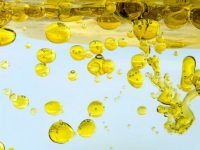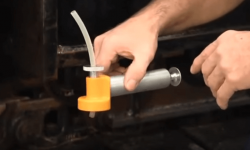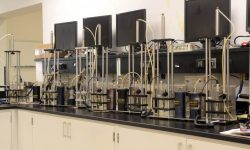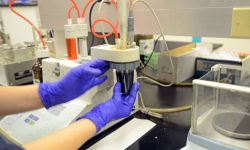Testing For Water
Water is one of the most destructive contaminants faced by industrial maintenance departments. Studies have shown that water present at any level can reduce bearing life from 10 to 100 times. While the overall tolerance for water varies from machine to machine, a good general alarm limit for water contamination is 0.05% (500 ppm). Some systems may be more tolerant to water, while others can be more sensitive. Some manufacturers have set limits as low as 30 ppm. Best practice would tend to indicate that it is beneficial to keep water contamination at the lowest level possible.
The Crackle Test
The crackle test relies on a very simple law of physics; water boils at 212º F. The sample is agitated and a small amount is applied to the surface of a hot plate at 600º F. If any water is present in the sample, there will be an indication in the form of bubbles or crackles. This test is used to screen for the presence of water, and if a positive result is determined, than a quantitative test is performed to measure the amount of water present in the sample.
Water by Karl Fischer
The most commonly used method to quantify water in a lubricating oil is ASTM D1744, Water by Karl Fischer. A measured amount of the oil sample is introduced into the titration chamber of an automated Karl Fischer Titrator. The sample is titrated to an electromagnetic endpoint. The result is reported in % water or parts per million.
Forms of Water
Water can be present in a lubricating oil in 3 different forms:
- Dissolved water refers to water that has been chemically absorbed into the oil. While dissolved water possesses no direct threat to the component being lubricated, its presence can serve as a catalyst to oxidation. Dissolved water is normally not visible in oil.
- Emulsified water is water that maintains its chemical integrity, but is held in suspension in the oil by additives and contaminants. Emulsified water will severely alter the load handling ability of an oil. When temperature and pressure are applied to a contaminated fluid, the oxidation process is significantly accelerated leading to pre-mature degradation. Internal corrosion and rust will also result in all areas of the system. When oil has emulsified water, it will take on a hazy or milky appearance.
- Free water describes water that is present in the oil, but not held in suspension. Since oil and water don’t mix, oil’s base stock will be constantly trying to separate from water. Without additives or contaminants to bond with the water, it will separate rapidly and settle to the bottom of the oil. Free water will be visible in oil as a separate phase at the bottom of the oil reservoir.
When water is detected in an oil sample, two distinctive steps should be taken:
1) Investigate and eliminate the source of the water.
Water can enter a system from three possible sources.
| Source | Possible Solution |
| condensation | desiccant breathers, climate control |
| external contamination | inspect seals, hatches, covers, and breathers for the source, and repair as needed |
| internal leaks | pressure check heat exchangers and steam tubes for leaks, repair as needed |
2) Remove the water from the system.
In the case of small reservoirs, an oil change may be the most efficient way to remove water contamination. New oils should be tested to ensure they are not contaminated prior to use. In larger systems where an oil change is less economical, many techniques for water removal are available. Some filtration technology can be effective at removing moisture. Others such as vacuum dehydration and centrifuge have become trusted and effective ways to purify the oil. If the oil in the system has good demulsibility, it may be as simple as shutting down the system for a few hours and draining the water from the low points.






